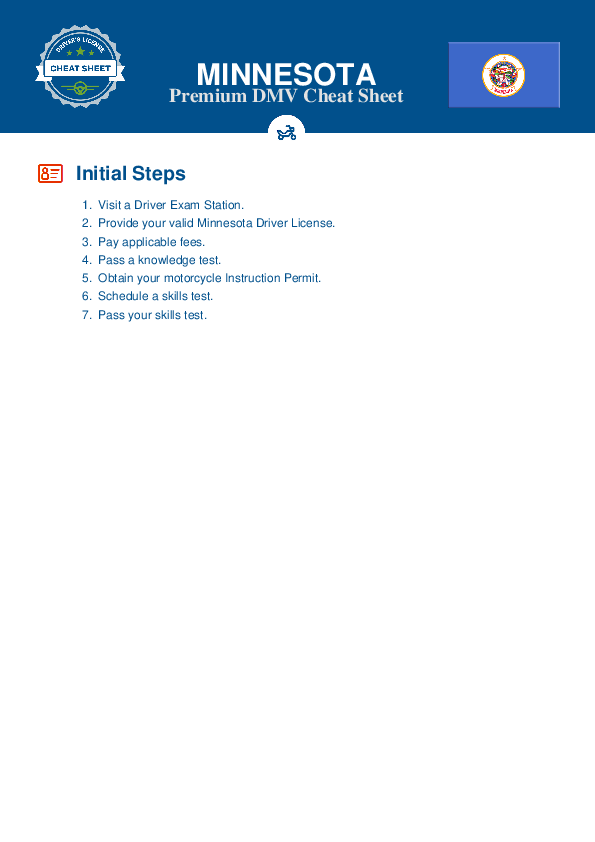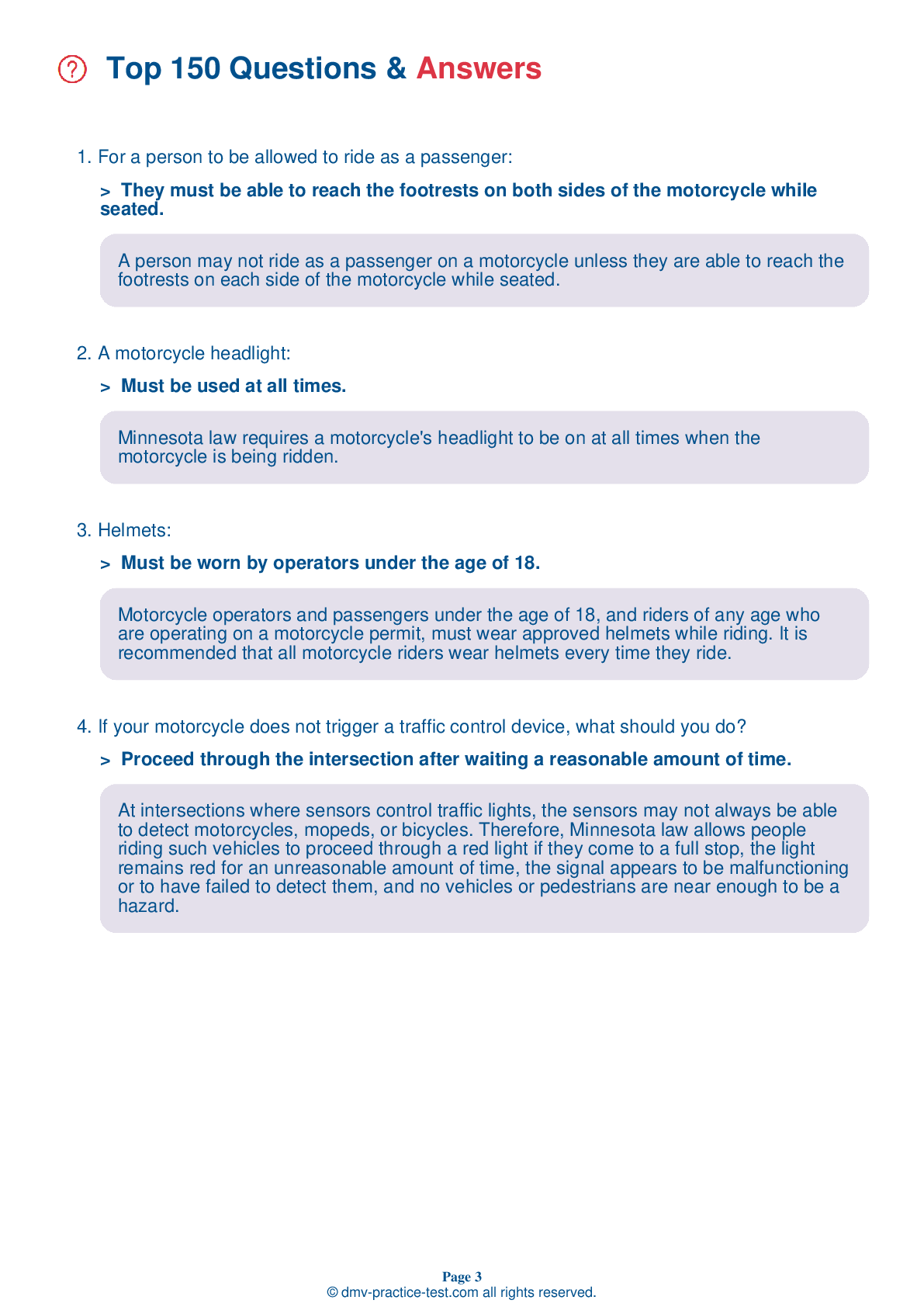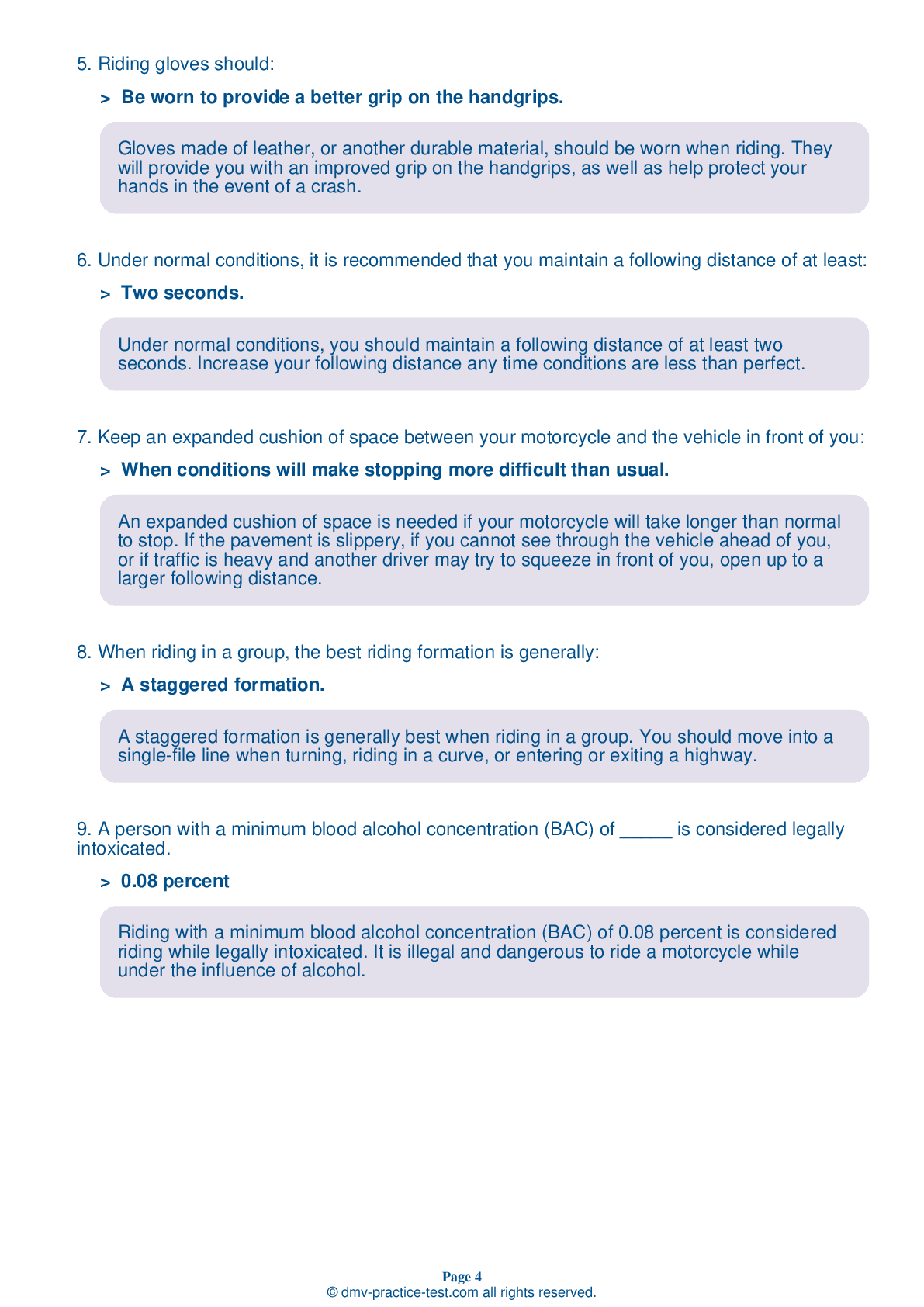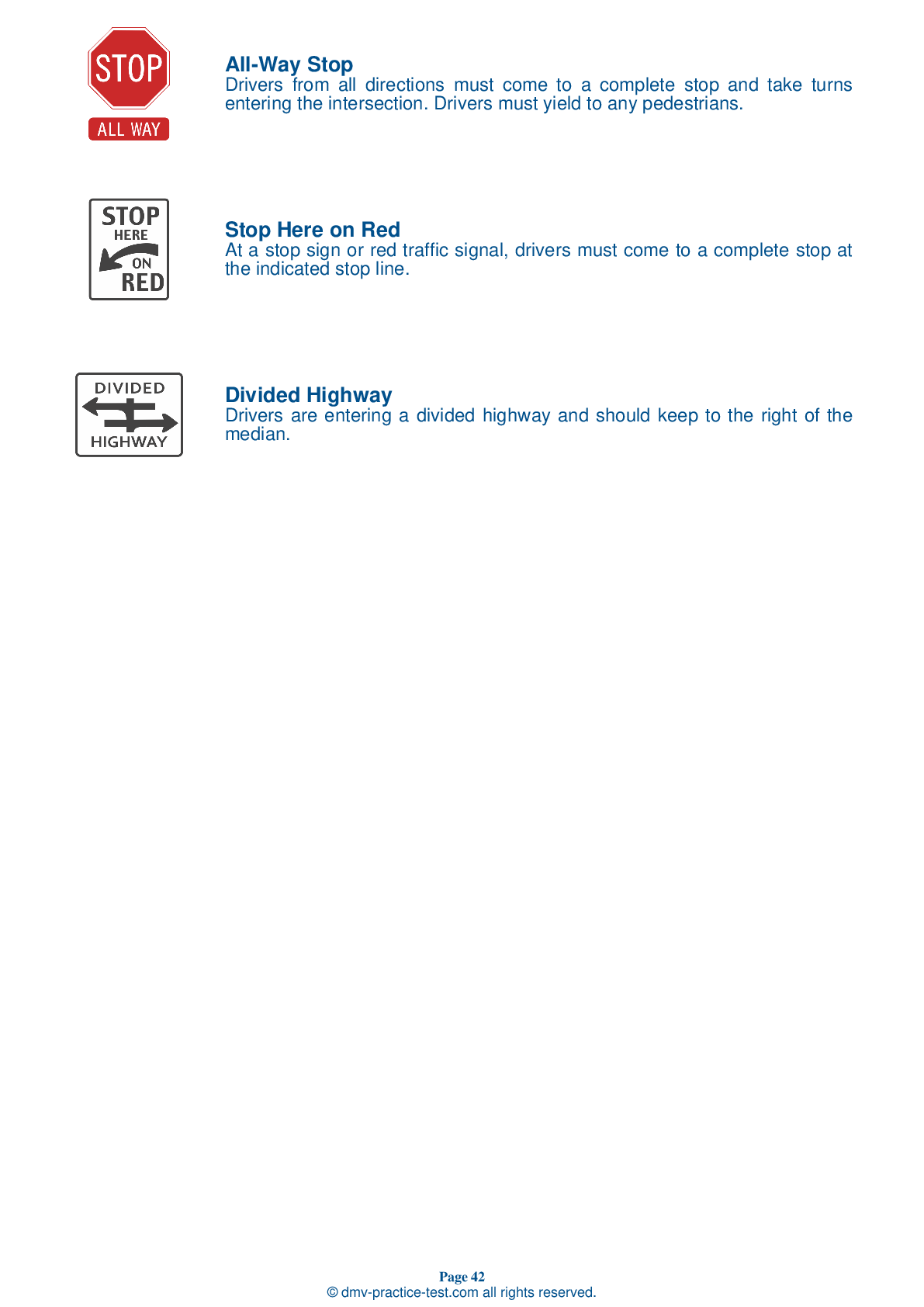Motorcycle Test | License MN 2025 | FREE Online Practice! #11 Page 2 of 5
Take this FREE motorcycle test (license in MN 2025) to check your knowledge of the road rules. To improve your results, download a motorcycle handbook online, study theory, and practice for free on our website. Still worried about how to get a motorcycle license in Minnesota in 2025? Check our website for more sample tests, train as much as possible, and boost your grades!
9 . When applying the front brake, you should:
To apply the front brake, firmly and smoothly squeeze the brake lever with all four fingers, applying progressively more force.
10 . Goggles will:
Wearing goggles provides protection for your eyes, but not for the rest of your face. A face shield provides protection for your whole face and is recommended above goggles. A windshield is not an adequate substitute for a face shield or goggles.
11 . This sign shows one type of:
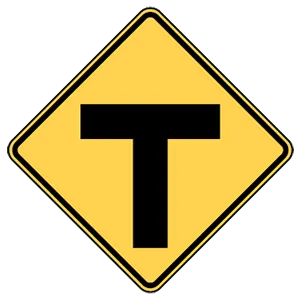
This sign indicates that a T intersection is ahead.
12 . This green arrow on a lane use control signal means:
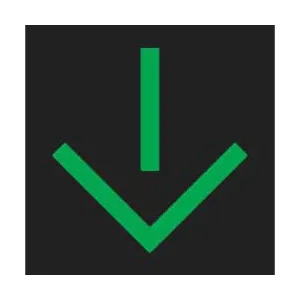
A steady downward green arrow over a traffic lane means you may use the lane indicated.
13 . Which types of brakes do most motorcycles have?
Motorcycles generally have one brake for each wheel. The front brake carries more braking power than the rear brake.
14 . A motorcyclist should attempt to avoid obstacles on the roadway. If avoiding an obstacle is not possible, the motorcyclist should:
If you are unable to avoid an obstacle and must instead ride over it, slow down and approach the obstacle at as close to a 90-degree angle as possible.
15 . When a lead rider is bending their left arm at the elbow, pointing upward, and swinging their arm toward their helmet, it means:
Hand signals are an important part of communication when riding in groups. When the lead rider's left arm is positioned for a right turn and swinging toward their helmet, it means the riders should pull off the road.
16 . A group of riders should merge onto a highway in:
While a staggered formation is usually best under normal riding conditions, a group of riders should switch to a single-file formation when taking curves, turning, or entering or exiting a highway.
See the exact questions that will be on the 2025 Minnesota DMV exam.
99.2% of people who use the cheat sheet pass the FIRST TIME
Jeneen was tired of paying $5/gallon. She got herself a scooter that required the motorcycle license. She studyed the motorcycle test cheat sheet and passed her test the next day!
Christopher tells us how he knew nothing prior to obtaining the motorcycle study guide, and he only got one question wrong because he clicked on the wrong answer by mistake.
